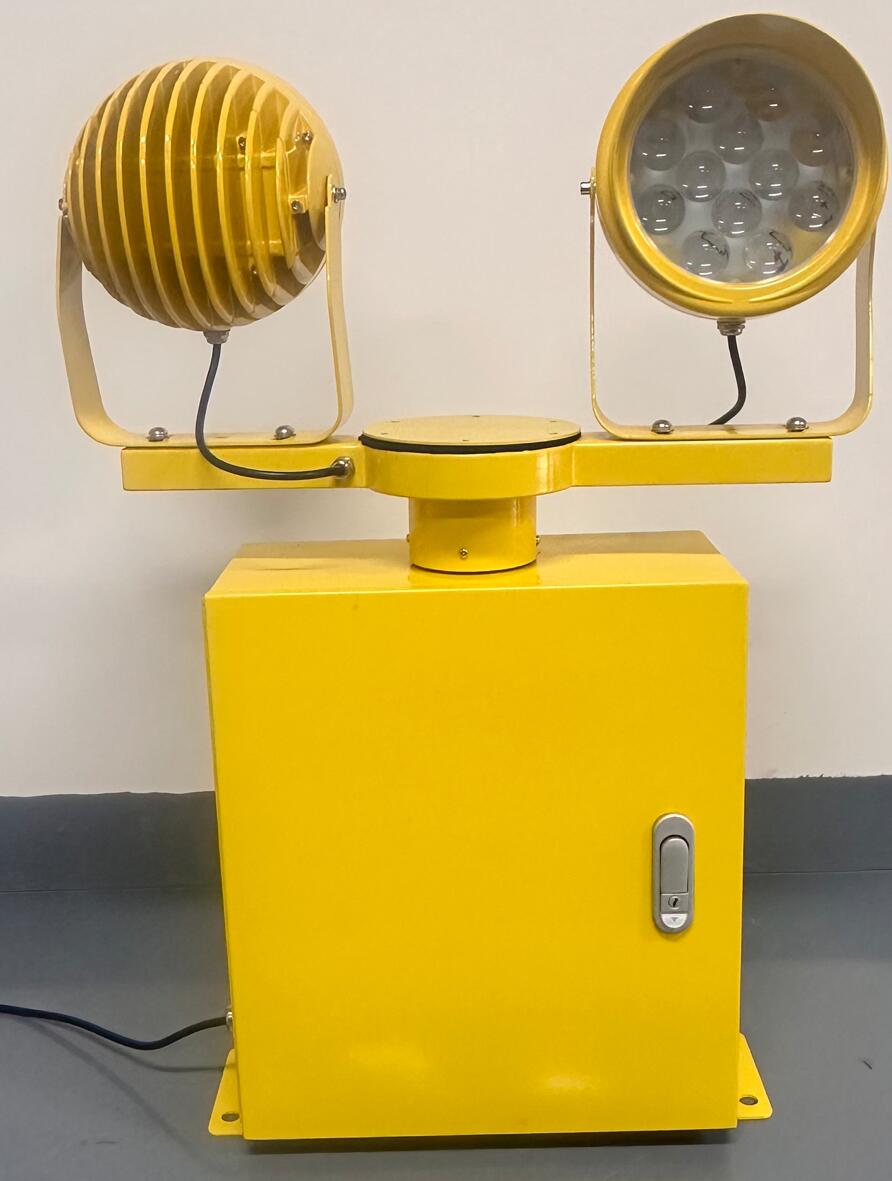In the dynamic world of aviation, safety is paramount. One of the most vital components for enhancing visibility and preventing mid-air collisions is the aircraft beacon lighting system. In recent years, the industry has seen a significant shift from traditional incandescent lighting to LED beacon light aircraft solutions. These high-efficiency systems are now the standard for many aircraft types, from small private planes to large commercial jets, offering long-lasting, high-intensity signaling that meets global aviation safety requirements.
What Is an LED Beacon Light Aircraft System?
An LED beacon light aircraft system is a high-intensity warning light mounted on the fuselage or tail of an aircraft. It emits a flashing red or white light, typically used to indicate that the aircraft’s engines are running or that the aircraft is in operation. The flashing pattern ensures visibility from long distances and in low-light or adverse weather conditions.
LED beacon lights serve two primary purposes:
Safety for ground personnel: The flashing light alerts workers that the aircraft is active, helping to prevent accidental approaches.
Airborne visibility: The light increases the aircraft's visibility to other pilots, reducing the risk of collision in congested airspace.
The Shift from Incandescent to LED
Traditional aircraft beacon lights used halogen or incandescent bulbs, which generated significant heat, consumed more power, and had shorter operational lifespans. The shift to LED beacon light aircraft systems addresses these limitations by offering:
Longer lifespan: LEDs can operate for tens of thousands of hours.
Lower power consumption: They draw less current from the aircraft’s electrical system.
Durability: Resistant to vibration and environmental changes.
Better visibility: LEDs offer brighter and more focused light with consistent color output.
This shift not only enhances performance but also reduces maintenance intervals, which is especially important for commercial operators.

Types and Placement of LED Beacon Lights
The configuration of an LED beacon light aircraft system varies based on aircraft type and operational requirements. Common placements include:
1. Upper and Lower Beacons
These are typically mounted on the top and bottom of the aircraft fuselage. They provide 360-degree horizontal coverage and high vertical visibility, ensuring that the aircraft is seen from any angle.
2. Tail-Mounted Beacons
On some aircraft, especially smaller or rotary-wing types, beacon lights are mounted on the tail fin to provide a clear line of sight during both ground and flight operations.
3. Wingtip Beacons
Although less common, some configurations incorporate flashing LEDs near the wings, supplementing the central beacon system for added visibility.
The FAA and other global aviation authorities define the intensity, frequency, and color requirements to ensure uniformity and effectiveness across fleets.
| led beacon light aircraft |
Key Advantages of LED Beacon Light Aircraft Systems
Switching to LED beacon lighting brings numerous operational and economic benefits. These include:
Enhanced Visibility: High-intensity LEDs improve aircraft visibility during day and night operations, in fog, rain, or snow.
Reduced Downtime: Long operational life means fewer replacements and maintenance checks.
Lower Operating Costs: LED systems draw significantly less power, reducing the load on electrical systems.
Environmental Benefits: With lower energy use and less waste from burnt-out bulbs, LEDs are a greener choice.
These advantages make LED beacon systems especially attractive for airlines, private operators, and unmanned aerial vehicles (UAVs).
Compliance and Certification
Any LED beacon light aircraft system must comply with standards set by aviation authorities, including:
FAA (Federal Aviation Administration)
EASA (European Union Aviation Safety Agency)
ICAO (International Civil Aviation Organization)
Standards govern not only brightness and color (typically red) but also flash rate (usually 40–100 flashes per minute) and mounting position. Aircraft manufacturers often integrate certified beacon systems into the initial design, while retrofit options are available for existing fleets.
It is critical that operators only use certified lights to ensure safety and avoid regulatory issues.
Integration with Aircraft Systems
Modern aircraft incorporate LED beacon lights into their centralized lighting control systems. These systems may include:
Automatic activation when engines are started or when the aircraft is powered on
Redundant power paths to ensure functionality in case of electrical failure
Diagnostics to monitor light health and alert maintenance crews to potential issues
For drones and electric aircraft, lightweight and energy-efficient LED beacon systems are particularly beneficial, extending battery life while maintaining compliance with visibility requirements.
| led beacon light aircraft system |
Applications Beyond Traditional Aircraft
While LED beacon light aircraft systems are most often associated with commercial and general aviation, they are also crucial for:
Drones and UAVs: Required for night operations or operations near controlled airspace.
Military Aircraft: Tactical beacons with infrared capability for covert operations.
Helicopters: Operating at low altitudes and in confined areas requires precise visibility management.
Experimental and Light Sport Aircraft: Where weight and energy efficiency are critical.
LED systems are now customizable to fit these varied platforms without compromising performance.
Future Trends in Aircraft Beacon Lighting
The future of LED beacon light aircraft systems is shaped by technological innovation and expanding airspace applications. Key developments include:
Smart Beacons: Capable of adjusting brightness and flash rate based on ambient conditions or flight phase.
Wireless Diagnostics: Enabling remote monitoring of lighting systems for predictive maintenance.
Integrated Navigation Aids: Combining beacon lights with other position-indicating systems to enhance air traffic coordination.
Miniaturization: Critical for integration into smaller aircraft and drones, allowing for safer, more efficient designs.
As aviation moves toward autonomous systems and urban air mobility, reliable and intelligent beacon lighting will become even more critical.
The integration of LED beacon light aircraft systems marks a significant step forward in aviation safety and efficiency. These lights provide powerful, reliable visibility cues that are essential for both ground personnel and airborne pilots. With long life, low energy use, and exceptional performance in diverse conditions, LED technology is the clear standard for modern beacon lighting.
Whether in commercial jets, helicopters, or unmanned vehicles, LED beacon systems play a vital role in maintaining safe skies. As aviation evolves, these compact, high-performance lights will continue to illuminate the path forward.